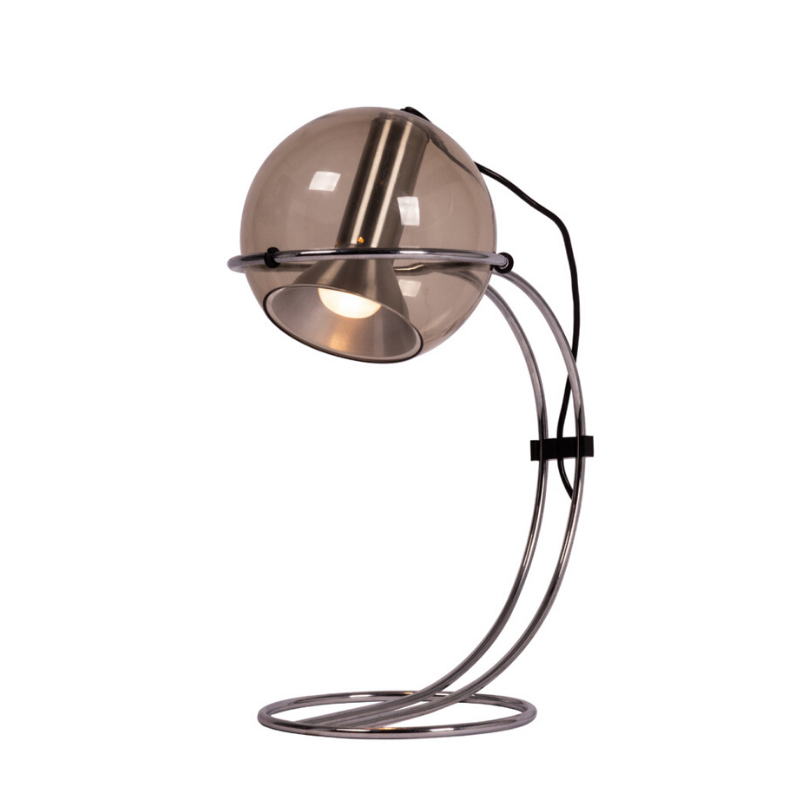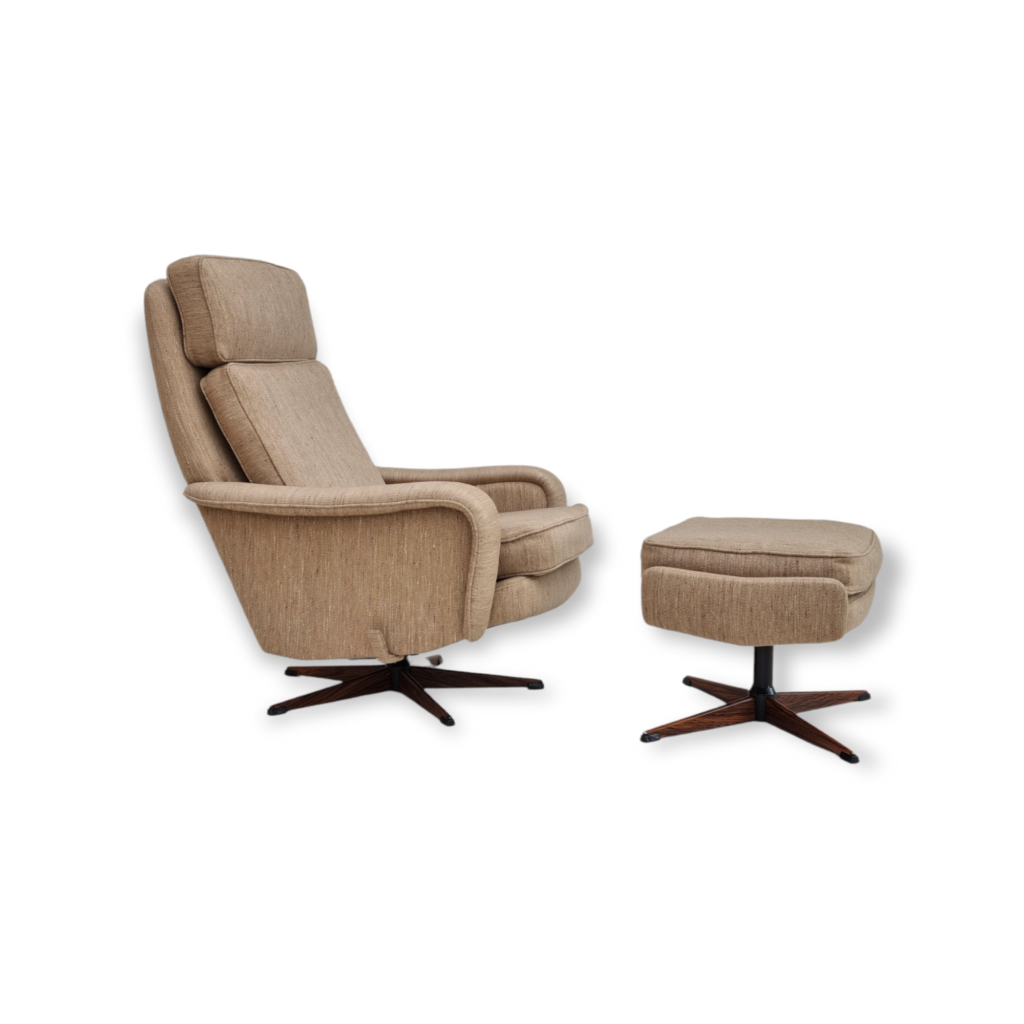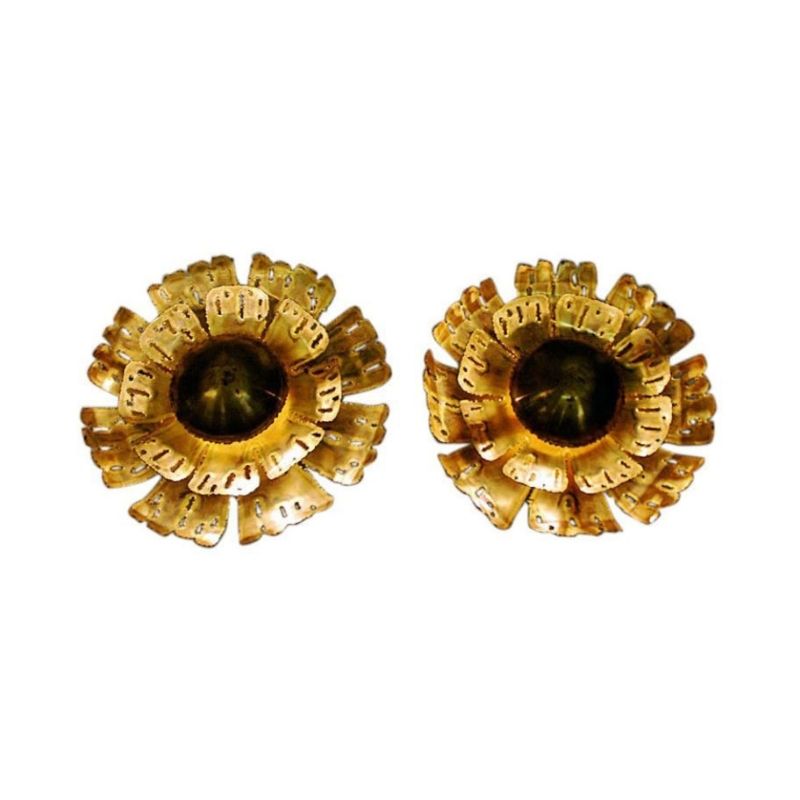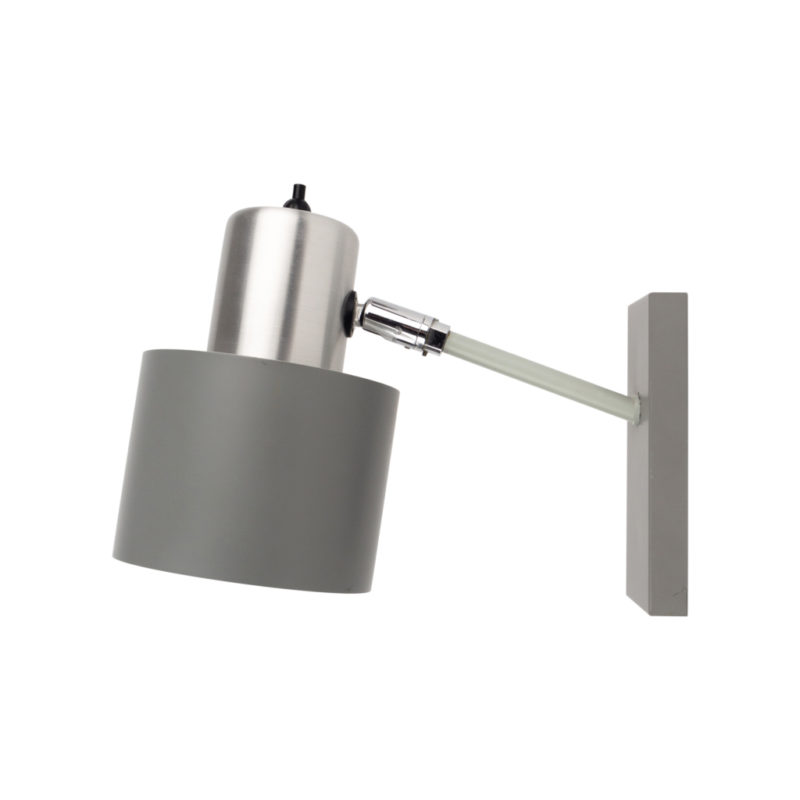vase
I knocked this up quickly in sketchup. I don't think that as a design its really necessary as there are already a number of ways to position flowers.
ceramic or glass is probably the best idea but as was pointed out the rods would inevitably get broken, so I thought it would be a good idea to position them inwards. First I thought of having a notched curved spun steel plate which sat on top of the vase, but I had trouble modelling that so just did one piece, then I thought that you could just have all the pieces cut out of aluminium or whatever and store them in the vase when its not being used? or you could use them on other vases? perhaps make them out of ceramic too for weight?
Just a rough idea, might do some more.
I was thinking of Marianne Brandt as I was doing it.
Heath
or perhaps more like the...
or perhaps more like the original idea... I think white ceramic and a chunky array of glass blocks, reflects the colours of the flowers maybe?
Who was that Dutch chap that soaked the sea sponge in clay and fired it?
Would it be possible to do that in a much larger size with holes in the top and then glaze the whole thing to retain the water?

invert it
...or the original idea could be inverted. I don't think the rods in the original idea will really stop the stems from slipping inside the vase, and will detract from the look of the flowers. Those glass flower frog things are fairly good but still won't entirely stop the arrangement from falling outwards.
What could be done is to use hard perforated platic tubing (perhaps of varying diameters, 10mm-30mm), the arrangement could be partially done outside of the vase and then the individual tubes placed inside the main container?
I'll stop now I've said quite enough 🙂
Heath

Somehow I could not...
resist the temptation to offer Patrick to produce the vase when we would have reached some kind of concensus on what the product should look like. In order to fullfil that commitment the vase has to be made in porcelain, stoneware or any other ceramic material, unless the additional materials are standard off the shelf parts. Other than my production concerns I also think that it is a good design decision. Design is about reaching both functional and aesthetic goals with the least possible use of materials and labor. Stainless steel is a very nice material but in this case it compares badly both in costs and environmental impact (as a raw material it is already close to 1140 mPt/kgr versus 310 mPt/kgr for porcelain. Being almost three times as heavy, the same mass of stainless has an ecological footprint that is more than 10 times bigger than porcelain.
If I may take a professional aproach to it, my first comment would be this: considering that the length and the quantity of the rods increases the costs, the first thing that has to be done is to look at the possibility to reduce their number and their hight without losing the character of the product, nor the function. My second step would be to see if I could combine dcwilson's concern with stability (cat-compatibility)and HP's comment on pointing the rods slightly inwards and make the whole thing slightly conical rather than cylindrical. Again, without loosing the identity of the concept.
Products like thes are slipcast, an ancient technology that is still one of the most used in the ceramic industry. In order to give you an idea of what slip casting is all about I made a few drawings that I will send to Patrick to be included in this thread. Slip is basically liquid clay. By adding water and chemical components that will increase the electrical charge of the clay molecules the clay becomes a slip. That slip is poored into plaster moulds. over a period of 15-20 minutes the plaster absorbs water in the slip enad the slip stiffens against the interior mould wall. At that point the mould is emptied. the stiffer shell stays the liquid slip runs out of the mould. The product is left to dry another 10 minutes or so and than taken out of the mould. When commenting on the design it is good to understand that the product is created by the plaster mould and that wherever you want to have a wall you have to have space for a plaster negatif. In order not to influence anybody, the drawings show a regular coffeepot and not the DA vase.
Hello Koen, would it be...
Hello Koen, would it be possible or easy to cast 8 or so 10mm deep circular depressions in the base of the vase? I know you wanted to avoid timber but what concerns me very much is that when one of these rods is broken off the owner won't know what to do with the vase, it will still be usable but not very attractive. If I have a bowl that breaks entirely it is an easy decision to try and fix it or throw it away. I think this would be difficult if this design is produced as a single piece object. I think rods hardwood/glass/ceramic should sit inside the vase inside individual depressions....this is my last idea, over to anyone else.
http://messmate.blogspot.com/
Thank you for these first...
Thank you for these first encouragements, reactions and suggestions. What an explosion of creativity!
We are happy that you like the idea.
I will answer to your comments and suggestions in a few hours.
I would like to specify that comments from all of you are welcome, not only from designers. The users' opinion is certainly not less interesting.
If somebody wants to post an image to illustrate his comment and does not know how to proceed, don't hesitate to send it to me at patrick@designaddict.com, I will add it for you.
I will try to be complete in...
I will try to be complete in my answers, but excuse me if I don't answer to all.
- The use of wood was at the beginning my first idea, but it inevitably implied an intervention to make the inside waterproof. If symbolically the use of wood had a justification, what is interesting in this exercise is that it shows the limiting factors that a designer has to take into account. Koen has precisely defined the possible materials for this vase (porcelain, stoneware or any other ceramic material), it is to us to find the solutions that take into account the requirements of these materials and their implementation.
I find the last idea of Heath interesting and I suppose that wooden rods could enter the category of 'standard off the shelf parts' mentioned by Koen. However I have a small preference for a project which would use only ceramic material.
- To answer the questions of Martin concerning the use of the vase:
Ideally, the vase should be able to be appropriate for various types of bouquets. The vase is narrow and high, but at the 2/3 of its height, the floral arrangement can open up to become rather broad. Like this:
The accuracy of the size and proportions is doubly important: First, for functional reasons and second, for aesthetic reasons. One of the characteristics of a vase it is that it must be beautiful even when it is not used. It must ideally have a kind of sculptural presence when it is empty and a more discreet presence when it is used so that it advantages the flowers.
It is a difficult exercise and that is why it's amusing.
Concerning the interaction between the user and the vase, it is also an important point. If the vase can stimulate the creativity of the user, it is beneficial.
The stems of the vase allow the organization of the bouquet as I tried to show here with a view from the top.
It is only an example, multiple combinations are of course possible.
- The production issues mentioned by Koen are of course of primary importance and must absolutely be taken into account. A product that requires a significant number of moulds or too many interventions during the production process is not a good product. I hope we can find an elegant solution for the vase AND for the production process.
The solution to reduce the number of rods is a good lead and I am certain that it is possible to modify this element as well as the proportions of the vase without changing the initial idea. However, before moving in this direction, I will try to make a drawing of the vase with a solution that might (or might not) reduce the production issues and the fragility of the rods.
I am having great fun, in another life, I want to be a designer: -)
Patrick
Hi HP!
I knew you would squeeze in some wood somewhere! It is possible to form cavities in the bottom, but as the sketch shows it has to be the parallel surface of the outside shape. I to am worried abouth the breakable long rods but there are two arguments in favour of it. The first one walks on thin ice...Tired of seeing people handeling objects in an often careless fashion, I see something positive in a kind of explicit fragility that might encourage people to handle this product with more care. Whenever I talk to people about what it takes to design,develop and produce something they often react with: "...I will never look at this product the same way again..." To keep some kind of "fragility" might be a good thing. The other argument is that when I looked at this "impossible thing" I was charmed by th fact that the rods are flush with the outside wall. A professional designer would never do that because it makes it much more difficult, no matter how the rods are connected to the vase, and to make it mono-block is even more complicated. Rods put into holes at the rim would of course pass through a hole that has an outside wall, meaning that the rod would be recessed from the edge of the cylinder. (see sketch) In spite of not knowing right now how to do it, I would prefer to keep that "flush" feature and compromise on the diameter of the rods, their number and the height. A way to avoid losing the visual continuity between the rods and the cylinder would be to ad a small rim that would "confuse the eye" (see sketch)... My interest in this is not to help to design a vase that would hold the flowers better, as you can see on the included pictures, I have solved that problem already. My interest is in keeping as much the original concept alive but develop it to a real object through all the steps and considerations that a normal design process would go through. With separate rods, the question also arises: Why have rods? If you have to make holes, why not make a slightly larger rim and more holes and use them to hold the stems (see sketch) I think we need more imput from others...
Click to enlarge
Unity of effort!
On first sight Patricks original design reminded me of the Roman fasces or bundle of sticks. Appropriately this symbol represents the "strength through unity of the Design Addict forum. A literal translation would be twigs wrapped around a straight glass vase but I dont think that is the direction we want here. Everyone seems to acknowledge the potentially fragile rods as being the main challenge, especially as we are restricted to slip cast ceramic material. My original thought was to use a more flexible injection moulded material - but that is not the direction we are going here. I look forward to the technical solutions.
Getting back to the symbolism; perhaps we could still retain a sort of ribbed effect on the exterior to represent this participation that Patrick and Koen have allowed us. This would also create bulges on the outside to accommodate the internal rods.
http://en.wikipedia.org/wiki/Fasces
Hi Robin
Somehow your idea puts us on the track of a possible technical solution. I have allowed myself to sketch it rapidly (do not be offended) As such it does not solve my production problem but if the overlap between the cylinder and the rods was about 20 mm I could cast cavities in the top rim and those would be able to hold ceramic cast rods. If they can extend slightly the edge of those cavities would not be too sharp to cast. See sketch...
Click to enlarge
James, thanks for your nice...
James, thanks for your nice proposals. They are probably technically impossible in the context of this project, but the technologies that should make them possible are beginning to appear. You should visit the site of materialise (link below) I think that it will interest you.
HP, Marcel Wanders is that Dutch chap that soaked the sea sponge in clay and fired it.
http://www.materialise.com/materialise/view/en/114832-.MGX+Design+produc...
If you need any help, please contact us at – info@designaddict.com










